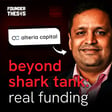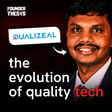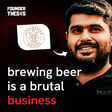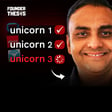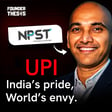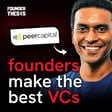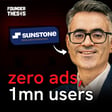
Why Distribution, Not Product, is The Real E-commerce Moat | Dr. Somdutta Singh (Assiduus Global)
"Distribution is a 300-year-old industry. I didn't invent it, I just innovated on it."
In a startup world obsessed with shiny new products, Dr. Somdutta Singh argues that the real, sustainable moat lies in mastering the age-old game of distribution. Her company, Assiduus Global, is built on this very principle, proving that innovating on the "how" of selling is often more powerful than just the "what".
About Dr. Somdutta Singh
Dr. Somdutta Singh is the Founder and CEO of Assiduus Global, an AI-powered e-commerce accelerator helping brands scale across more than 12 global marketplaces. A serial entrepreneur with a remarkable track record, she achieved her first multi-million dollar exit by age 26 and later built and sold a portfolio of D2C brands for approximately $30 million. An alumna of MIT and Harvard Business School, she is also a prolific investor in over 50 startups and a passionate advocate for women-led innovation.
Key Insights from the Conversation:
- The "Scratched-Itch" Founder Journey: Assiduus was born from her own struggles taking her D2C brands global, creating the exact solution she wished she had.
- The "Anti-Aggregator" Model: Unlike Thrasio-style companies that acquire brands, Assiduus partners with them, allowing founders to retain ownership while Assiduus manages the end-to-end sales process.
- Data-Driven Niche Identification: She built her profitable D2C brands by using marketplace APIs to find high-demand, low-penetration categories (like sexual wellness) and reverse-engineering products for those markets.
- Profitability Over Valuation: Dr. Singh champions a business philosophy focused on building profitable, sustainable companies from day one, rather than chasing vanity valuations.
- Cross-Border Compliance is Key: Successfully scaling globally requires deep expertise in navigating complex and varied international regulations, licensing, and compliance, a core value proposition of her business.
Chapters:
(00:29) - Early Life & The Entrepreneurial Spark
(08:06) - First Venture & The Million-Dollar Exit at 25
(18:30) - Building a D2C Empire: The Profitable-From-Day-One Playbook
(25:41) - The $30M Exit & The Philosophy of Knowing When to Sell
(34:55) - The "Scratched-Itch": The Origin Story of Assiduus Global
(37:27) - The "Anti-Aggregator" Model: How Assiduus Wins
(47:24) - The Playbook for Global Expansion & Lessons Learned
(1:07:56) - The Tech Moat: Inside Assiduus's Proprietary Platform
(1:22:12) - The $15M Series A: Why She Raised Capital When Profitable
(1:26:48) - Her Personal Investment Thesis & How to Get Funded By Her
Hashtags for YouTube:
#FounderThesis #StartupPodcast #Entrepreneurship #IndianStartups #Ecommerce #D2C #SomduttaSingh #AssiduusGlobal #CrossBorderEcommerce #BrandBuilding #StartupFunding #VentureCapital #ExitStrategy #Bootstrapping #WomenInBusiness #FounderStory #BusinessStrategy #SaaS #SupplyChain #Leadership #MakeInIndia












